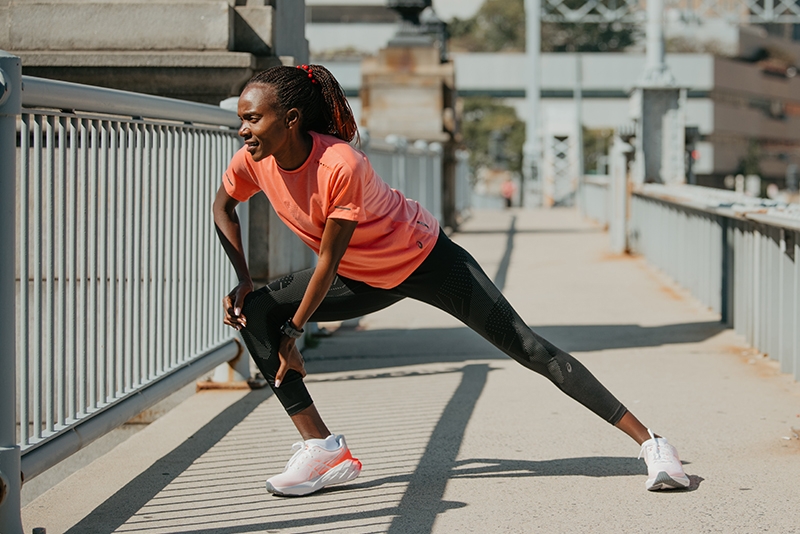Just How to stop and Handle Pain in Operating: Specialist Tips and Suggestions
As runners, we commonly find ourselves captured in between the exhilaration of pressing our physical limits and the pain that can accompany it. The search of that runner's high can sometimes be hindered by the undesirable friend of pain. Whether you are a skilled marathoner or a novice striking the sidewalk for the very first time, the nagging visibility of pain and pain is a common denominator. Nonetheless, there exist tried and tested techniques and professional recommendations that can assist alleviate and manage these discomforts, permitting you to concentrate on the joy of running itself.
Importance of Proper Shoes
Correct shoes plays a crucial function in preventing and handling pain for joggers, as it considerably influences their comfort, performance, and general foot health. When it concerns running, wearing the right shoes can make all the difference. Uncomfortable or inappropriate shoes can lead to a host of problems such as blisters, shin splints, plantar fasciitis, and a lot more severe injuries like tension cracks.
Picking the correct operating footwear includes taking into consideration elements such as foot type, gait mechanics, running terrain, and individual choices. Joggers with high arches may need more padding and support, while those with flat feet may benefit from stability footwear. Furthermore, comprehending pronation (the inward rolling of the foot) and supination (the external rolling of the foot) can help in selecting shoes that supply the ideal degree of arch support.
Investing in quality running shoes that are appropriate for your individual needs can assist prevent discomfort and pain while enhancing your running experience. Prioritizing proper shoes is not almost performance however additionally regarding guarding your foot health and wellness in the lengthy run.

Efficient Warm-up Techniques
A dynamic warm-up regimen before a run assists raise blood flow to the muscle mass, enhances adaptability, and improves the variety of movement of the joints. Dynamic stretches like leg swings, high knees, and hip circles are helpful in preparing the body for the physical demands of running.
Along with vibrant stretches, integrating some light cardio exercises such as running or missing rope can further elevate the heart price and heat up the body. This combination of dynamic stretching and light cardio helps loosen tight muscles, oil the joints, and psychologically prepares the runner for the upcoming exercise (running workout). By making workouts a regular component of your running regimen, you can dramatically reduce the risk of injuries and carry out at your best during each run
Secret Extending Exercises
When preparing for a run, incorporating crucial extending workouts is vital to improve muscle mass adaptability and prevent injuries - Read More. Dynamic stretches such as leg swings, high knees, and hip circles are advantageous for warming up the muscular tissues and enhancing variety of activity prior to a run. These motions help enhance blood circulation, loosen up tight muscle mass, and prepare the body for the task ahead
Fixed stretches like calf stretches, hamstring stretches, and quadriceps stretches must follow a go to help in muscular tissue recovery and protect against rigidity. Holding each stretch for 15-30 secs enables the muscles to relax and elongate, reducing the danger of post-run soreness and possible injuries.
In addition, including yoga positions like descending dog, pigeon posture, and spine twists can target several muscular tissue groups all at once, promoting total flexibility and strength. Constant stretching regimens not just enhance performance but also aid in preserving great running kind and stopping overuse injuries. Bear in mind, appropriate extending methods are crucial for a secure and delightful running experience.
Recuperation and Relax Strategies
After finishing a run, carrying out effective recovery and remainder methods is necessary for optimizing performance and reducing the risk of injuries. In addition, integrating remainder days right into your training schedule is crucial to prevent overuse injuries and exhaustion.
Energetic healing methods such as mild stretching, foam rolling, and yoga exercise can help improve circulation, decrease muscle mass soreness, and improve adaptability. It is additionally beneficial to focus on hydration and nutrition post-run to replenish electrolytes, glycogen stores, and promote muscle healing.
Cross-training activities like swimming or cycling can offer a break from the recurring effect of running while still keeping cardiovascular physical fitness - running workout. Paying attention to your body and identifying when it requires a break is vital to avoid chronic injuries and ensuring long-term running success. Remember, rest is not an indicator of weak point yet a crucial part of an all-around training regimen
Cross-Training Benefits
:max_bytes(150000):strip_icc()/running-longer-or-faster-31e97070bda14ffc8afdea52094504c7.jpg)
It enables you to function on different elements of health and fitness that might not be targeted exclusively via running, leading to a much more balanced and well-rounded professional athlete. Furthermore, cross-training can aid boost running performance by resolving muscle discrepancies and weak points that might hinder performance.
Conclusion
In final thought, correct shoes, warm-up techniques, stretching exercises, healing methods, and cross-training are essential components in preventing and taking care of pain in running. By incorporating these techniques right into your regimen, you can minimize the threat of injury and pain while making the most of performance and enjoyment of the sport. Read More. Bear in mind to listen to your body, focus on rest and recovery, and seek expert guidance when needed to ensure a safe and reliable running experience